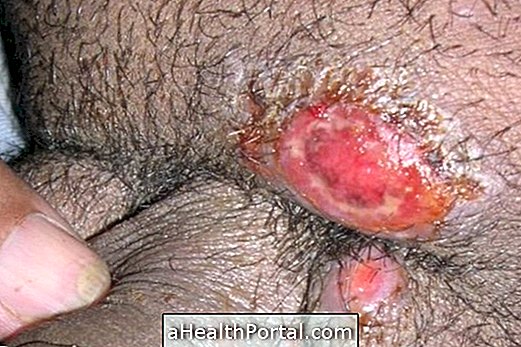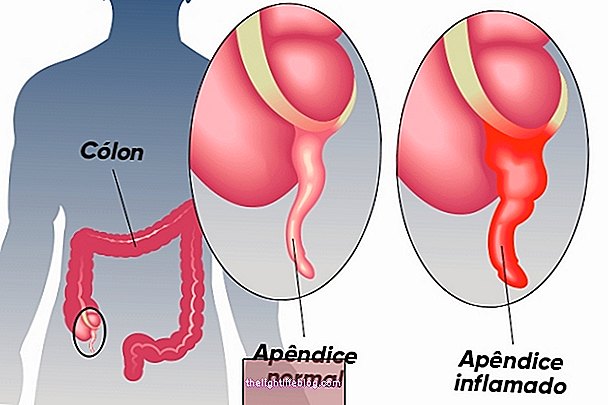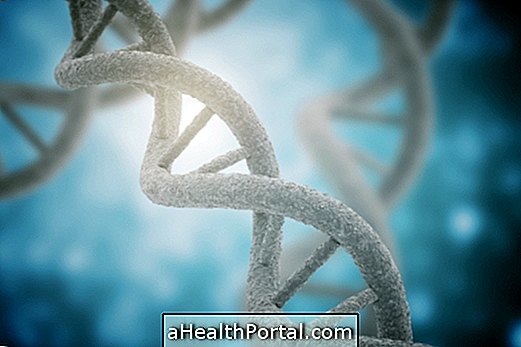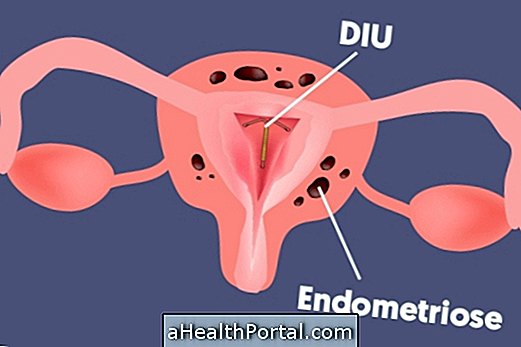Burkitt's lymphoma is a type of cancer of the lymphatic system, which particularly affects lymphocytes, which are the body's defense cells. This cancer may be associated with infection by the Epstein Barr virus (EBV), the human immunodeficiency virus (HIV), but it can also arise from some genetic alteration.
Generally, this type of lymphoma develops more in male children than in adults and most often affects organs in the abdomen. However, because it is an aggressive cancer, in which the cancer cells grow rapidly, it can reach other organs, such as the liver, spleen, bone marrow and even the bones of the face.
The first sign of Burkitt's lymphoma is the appearance of swelling in the neck, armpits, groin or swelling in the belly or face, depending on the location affected by the lymphoma. After assessing the symptoms, the hematologist will confirm the diagnosis through biopsy and imaging tests. Thus, having the confirmation of Burkitt's lymphoma, the most appropriate treatment is indicated, which is usually chemotherapy. See more how chemotherapy is done.

Main symptoms
Symptoms of Burkitt's lymphoma can vary depending on the type and location of the tumor, but the most common symptoms of this type of cancer are:
- Tongue in the neck, armpits and / or groin;
- Excessive night sweat;
- Fever;
- Thinning without apparent cause;
- Fatigue.
It is very common for Burkitt's lymphoma to affect the region of the jaw and other bones of the face, so it can cause swelling on one side of the face. However, the tumor can also grow in the abdomen, causing bloating and abdominal pain, bleeding and intestinal obstruction. When the lymphoma spreads to the brain, it can cause weakness in the body and difficulty walking.
In addition, the swelling caused by Burkitt's lymphoma does not always cause pain and often starts or worsens in just a few days.
What are the causes
Although the causes of Burkitt's lymphoma are not exactly known, in some situations this cancer is associated with infections by the EBV virus and HIV. In addition, having a congenital disease, that is, being born with a genetic problem that impairs the body's defenses, may be linked with the development of this type of lymphoma.
Burkitt's lymphoma is the most common type of childhood cancer in regions where there are cases of malaria, such as Africa, and it is also common in other parts of the world where there are many children infected with the HIV virus.
How to confirm the diagnosis
As Burkitt's lymphoma spreads very quickly, it is important that the diagnosis be made as soon as possible. The general practitioner or pediatrician may suspect the cancer and refer it to the oncologist or hematologist, and after knowing how long ago the symptoms appeared, it will indicate the performance of a biopsy in the tumor area. Find out how the biopsy is done.
In addition, other tests are performed to diagnose Burkitt's lymphoma, such as computed tomography, magnetic resonance imaging, pet-scan, bone marrow and CSF collection. These tests are for the doctor to identify the severity and extent of the disease and then define the type of treatment.

Main types
The World Health Organization classifies Burkitt's lymphoma into three different types, they are:
- Endemic or African: mainly affects children aged 4 to 7 years and is twice as common in boys;
- Sporadic or non-African: it is the most common type and can happen to children and adults all over the world, with almost half of cases of lymphomas in children;
- Associated with immunodeficiency: it occurs in people who are infected with the HIV virus and have AIDS.
Burkitt's lymphoma can also occur in people who are born with a genetic disease that causes low immunity problems, and sometimes it can affect people who have had a transplant and who use immunosuppressive drugs.
How the treatment is done
Treatment for Burkitt's lymphoma should be started as soon as the diagnosis is confirmed, as it is a type of tumor that grows very fast. The hematologist recommends treatment according to the location of the tumor and the stage of the disease, but in most cases, treatment for this type of lymphoma is based on chemotherapy.
The drugs that can be used together in chemotherapy are cyclophosphamide, vincristine, doxorubicin, dexamethasone, methotrexate and cytarabine. Immunotherapy is also used, the most used medicine being rituximab, which binds to proteins in cancer cells helping to eliminate cancer.
Intrathecal chemotherapy, which is a medication applied to the spine, is indicated for the treatment of Burkitt's lymphoma in the brain and is used to prevent it from spreading to other parts of the body.
However, other types of treatment may be indicated by the doctor, such as radiotherapy, surgery and autologous bone marrow transplantation or autotransplantation.
Is Burkitt's lymphoma curable?
Despite being an aggressive type of cancer, Burkitt's lymphoma is almost always curable, but this will depend on when the disease was diagnosed, the affected area and whether treatment was started quickly. When the disease is diagnosed at an early stage and when treatment begins thereafter, there is a greater chance of a cure.
Burkitt's lymphomas in stage I and II have more than 90% of cure, whereas lymphomas with stage III and IV have an average of 80% chances of cure.
At the end of the treatment, it will be necessary to follow up with a hematologist for about 2 years and perform exams every 3 months.
Check out a video with some tips on how to deal with cancer treatment symptoms:

Was this information helpful?
Yes No
Your opinion is important! Write here how we can improve our text:
Any questions? Click here to be answered.
Email in which you want to receive a reply:
Check the confirmation email we sent you.
Your name:
Reason for visit:
--- Choose your reason --- DiseaseLive betterHelp another personGain knowledge
Are you a health professional?
NoMedicalPharmaceuticalsNurseNutritionistBiomedicalPhysiotherapistBeauticianOther
Bibliography
- DUNLEAVY, Kieron et al. Update on Burkitt Lymphoma. Hematol Oncol Clin N Am. Vol.30. 1333-1343, 2016
- WEB MD. Burkitt Lymphoma. Available in: . Accessed on 15 Oct 2019
- GOLDMAN, Lee; SCHAFER, Andrew I.. Goldman-Cecil Medicine . 25, ed. Rio de Janeiro: Elsevier, 2018. 1279-1320.
- STATPEARLS PUBLISHING. Cancer, Burkitt Lymphoma. Available in: . Accessed on 15 Oct 2019
























